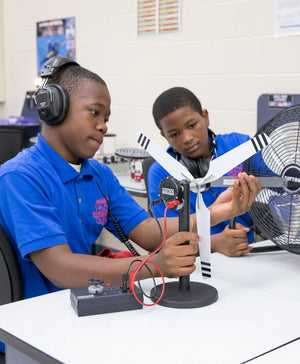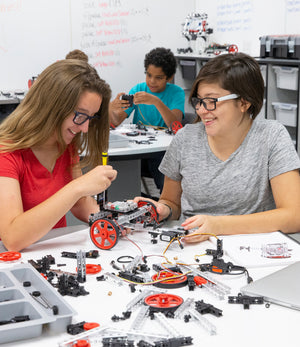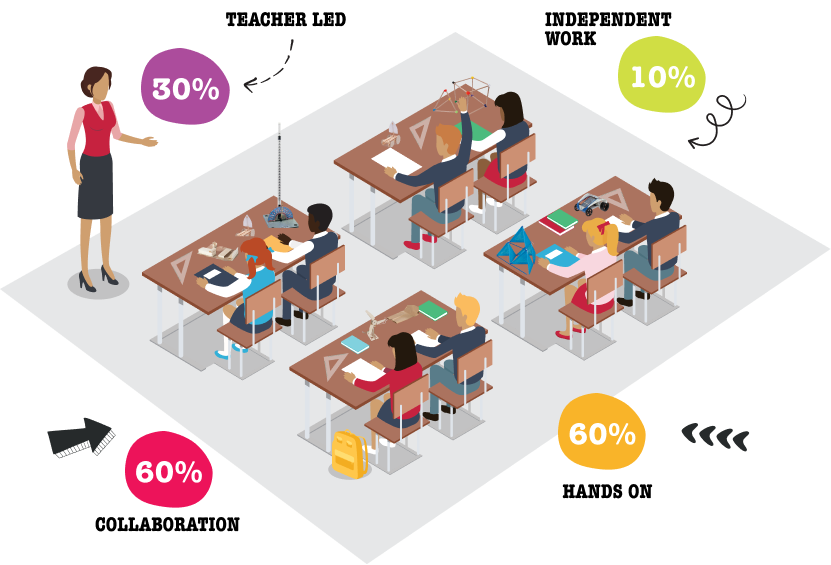Collaborative and Future-Focused STEM Programs for Grades 6–9


Any Child, Any Place, Any Path, Any Pace:
Our Expeditions program is where content knowledge and hands-on projects meet workforce preparation and college readiness.
Expeditions labs integrate STEM concepts through interactive, student-led activities that promote science inquiry, math practices, engineering design principles, and career exploration.

What students get
Access to the online content, 1:1 printed or digital logbooks, and all hands-on materials to complete projects.

What educators get
Online content licensing, professional development, educator resources, and ongoing technical support

What Classrooms Get
Scheduled in-person installation and setup, furniture, and storage
STEM VS CAREER
STEM and Career Expeditions function the same, but their focus is intentionally different.
Where the STEM titles use an iterative project-focused approach rooted in the engineering design process, Career Expeditions are designed around national career clusters to provide a greater CTE focus. Read this study by the Friday Institute, which indicates the STEM Expeditions® program helps students achieve statistically significant results on national tests.


THE FRAMEWORK:
Each title begins with an open-ended Essential Question, and, by the end, students will be able to answer and justify their thinking.
Students work in pairs to complete online, cloud-based multimedia content and projects. It’s entirely self-guided, meaning educators do not need to be content experts and students can spend time on topics they enjoy. Learners track their work in logbooks, which facilitators use to measure progress and comprehension.
Browse Our Titles
There are 33 STEM titles and eight Career titles to choose from in the Expeditions program. The blending of teacher-led instruction with collaborative, student-directed activities allows flexibility and a variety of options for implementation.
- A Closer Look
- Ahead of the Game
- Artificial Ecosystem
- Beyond Earth
- Bio Research
- Body Blueprint
- Building Bridges
- Communications
- Contraptions
- Creative Composites
- Cultivating Our Future
- Design Time
- Dragster Design
- Electric Tech
- Engineering Rockets
- Everyday Electricity
- Flight Dynamics
- Fueling the Future
- Future Footprints
- Get a Grip
- Growing Up
- Innovating Solutions
- Looks Like Rain
- Making Waves
- Mining Mechanics
- Optical Solutions
- Rolling Robots
- Safe Food
- Theme Park Physics
- Thermal Physics
- Tower Power
- Transportation Stations
- Urban Wind Farm
A Closer Look
In A Closer Look, students learn about the classification system and explore different types of small single-cell organisms using a microscope. Their challenge is to use a small lens to create a microscope using a camera from an electronic device such as a cell phone or tablet. The microscope is used to gather data after a disaster.
Objectives:
- Learn about the scientific classification system of organisms.
- Use a microscope to identify cell parts in monerans and protists.
- Learn how antibiotics are used to fight bacteria.
- Learn how bacteria become resistant to antibiotics.
- Create a microscope.
- Use a microscope to identify organisms in water.
Essential Questions:
- How can we help disaster areas recover to healthy living conditions faster?
Career Connections:
- Agricultural and Food Scientists
- Biological Technicians
- Epidemiologists
- Food Preparation Workers
- Forensic Science Technicians
- Health and Safety Engineers
- Health Educators and Community Health Workers
- Microbiologists
Standard Alignments
The following reports offer national correlations and best set reports. Custom reports available upon request.
Supplementary Units
Looking for a STEM project-based learning unit to accompany your core content? Shop our STEM PBL Units, which encourage students to make local connections as they innovate to solve problems in their community. Correlations available upon request.

"It gives them a chance to really dive in and write out their ideas, their hypotheses. This worked. This didn't work. That kind of thinking about thinking, metacognition if you will, has been a big push for them.. Students learn to explore and not be afraid to fail. They can swing the bat as many times as they need to until they hit the ball, essentially."
– Brian Houghton, K-12 lead teacher, Fredonia, KS
